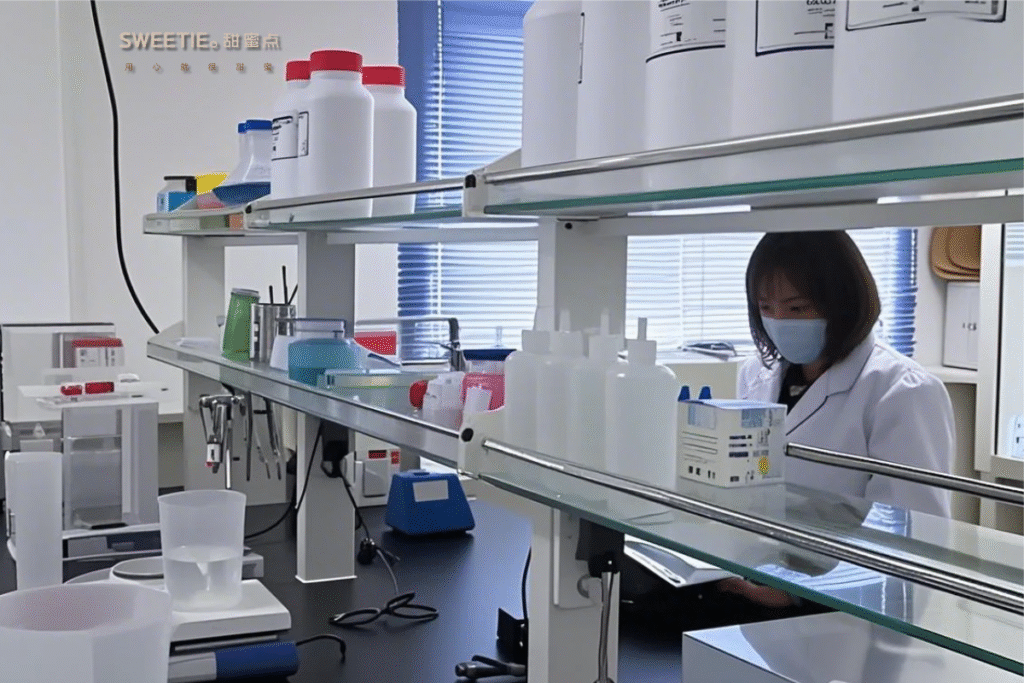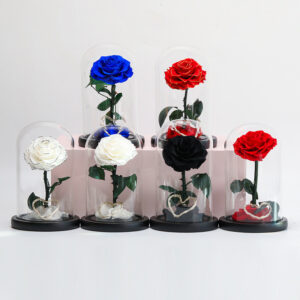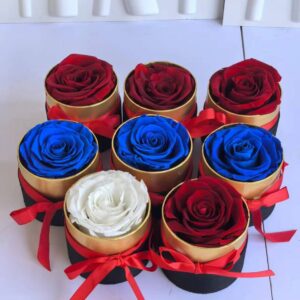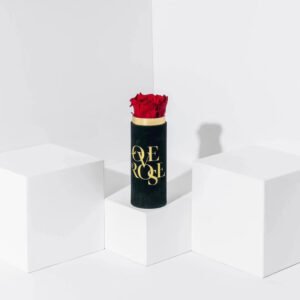
A Common Surprise That Shouldn’t Be So Common
If you’ve ever opened a preserved flower gift box to find the inside stained by the flowers themselves, you’re not alone. This issue—color from preserved petals rubbing off onto packaging—is more widespread than you might expect.
For chain retailers, importers, and wholesalers, it’s not just an aesthetic issue. It can lead to customer complaints, returns, and loss of confidence in your product quality. The real frustration? You might not realize it’s a problem until the product has already reached the shelf—or worse, the customer’s hands.
So, what’s causing it? And more importantly, how can manufacturers reduce it and buyers avoid it? Let’s dive in.
Understanding Why Dye Transfer Happens
Before we look at solutions, it helps to understand the root causes:
1. Surface-Level Dyeing
Some producers use fast, low-cost methods that color only the outer layer of the petals. When dyes remain on the surface instead of being absorbed into the flower structure, they are more likely to rub off during handling or shipping.
2. Weak Dye Fixation
Even if good-quality dye is used, it’s not enough. Without a fixation process—like setting agents or pH-neutralizing steps—the color remains unstable. This instability increases the likelihood of transfer, especially in humid or warm conditions.
3. Moisture and Heat in Transit
Preserved flowers are sensitive. When boxed products sit in high humidity or warm conditions for too long, residual moisture in the petals can reactivate dyes. These conditions cause the color to seep out and stain whatever’s nearby, including packaging materials.
4. Poor Choice of Petal Type
Certain flower varieties with open, porous petals hold less dye internally. These types tend to bleed more easily, especially when compressed or exposed to friction.
For more factory insights → inquiry@sweetie-group.com



What Can Be Done at the Factory Level
To reduce the chance of dye transfer, manufacturers should focus on four production stages:
A. Dye Penetration
- Use slow-absorbing methods that allow pigment to reach deep into the petal, not just the surface.
- Maintain proper dyeing conditions (temperature, pH, soak time) to ensure better absorption.
B. Thorough Rinsing
- After dyeing, petals should go through multiple rinse cycles to remove any surface dye particles.
- Use ethanol-water mixes for better solvent performance without damaging the petal structure.
C. Color Fixation
- Apply water-soluble fixing agents that help bind the dye molecules into the flower tissue.
- Neutralize pH levels after dyeing to prevent dye instability over time.
D. Controlled Drying and Testing
- Dry completely in low-humidity environments.
- Conduct simple rub tests and high-temperature simulations to ensure dye doesn’t transfer under stress.
How Sweetie-Gifts Handles It
At Sweetie-Gifts, we’ve worked with some of the world’s most demanding gift brands, so we’ve made anti-stain protocols part of our production DNA:
- Deeper Dyeing Process: Our roses are dyed under tightly controlled conditions to allow deep penetration of color, not just surface staining.
- Post-Dye Cleaning: Flowers undergo extended rinsing and ethanol washes to remove excess dye before drying.
- Fixing and Drying: Our team uses food-grade fixatives and ensures every batch is fully dried in humidity-controlled rooms.
- Isolation Layers in Packaging: We insert a barrier liner between the petals and the inner wall of the box to minimize contact friction.
- Strict QC Before Shipping: Each shipment includes pre-packed friction tests and humidity simulations.
We’ve spent years refining these steps because we know how much your brand reputation depends on what happens inside the box.
Want to visit our preserved flowers factory? → inquiry@sweetie-group.com

What Buyers Should Ask and Share
Even the best flower can be compromised if handled or stored incorrectly. Here’s what you can do:
Before Ordering
- Ask your supplier: Do they rinse after dyeing? Do they use fixatives? Have they tested colorfastness under high humidity?
During Import and Storage
- Store preserved flower boxes in dry, cool warehouses (ideally below 60% humidity).
- Avoid stacking or pressing boxes that contain soft-petal varieties.
On the Product Label
Consider including a small printed note like:
“Due to the natural treatment of preserved roses, avoid prolonged exposure to heat and humidity. Do not remove from box or press petals to prevent staining.”
Prevention Matrix
| Production Stage | Best Practice |
|---|---|
| Dye Application | Use deep-soak methods and temperature control |
| Rinsing | Multi-cycle rinses with ethanol-water solutions |
| Fixation | Add fixing agents and neutralize pH |
| Drying | Dry fully in humidity-controlled environment |
| Testing | Rub and heat simulations before packing |
| Packaging | Add liner between flower and inner box wall |
| Labeling | Inform customers of proper handling |
Final Thoughts
Color migration is avoidable—but only if you’re working with the right partners who take the time to address it at every step.
At Sweetie-Gifts, we’ve helped retailers, supermarkets, and gift brands around the world reduce complaint rates and increase product satisfaction by controlling for this exact issue.
If you want preserved flower products that stay beautiful inside and out, we’d love to send you a sample and show you our process.
📩 Reach out to us at: inquiry@sweetie-group.com

Warmly,
Annie Zhang
CEO, Sweetie-Gifts











